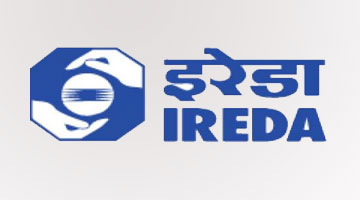Proposed Insolvency & Bankruptcy code can galvanize economy
NOVEMBER 15, 2015
By TIOL Edit Team
THE draft Insolvency and Bankruptcy (I&B) Bill, if enacted, can give a big boost to the economy whose impact might well be better than any other stimulant such as goods and service tax (GST).
Both GST & I & B laws should be fast-tracked to harvest their synergetic effect on ease of doing business (EODB). The I&B law can boost economic growth as it consolidates nebulous, scattered and complex regulations relating to bankruptcy into a single legislation.
It would help improve credit flow across the economy as both secured & unsecured creditors would be able to recover their money promptly. It would create ecosystem under which they would be willing to lend more and extend their credit to entities they avoid.
The Act would help efficient and timely revival or liquidation of all type of businesses. The time-bound liquidation would unlock labour, capital assets and entrepreneurship from decaying enterprises. This would be achieved through fast-track winding up of unsustainable businesses and their deployment in productive activities. It would thus keep jobs market in the dynamic mode.
The Act would also enhance competitiveness of enterprises as it would prevent secondary sickness, which results from the prolonged existence of sick companies with numerous prop-ups.
As aptly put by the Bankruptcy Law Reforms Committee (BLRC) which drafted the Bill, "India is one of the youngest republics in the world, with a high concentration of the most dynamic entrepreneurs. Yet these game changers and growth drivers are crippled by an environment that takes some of the longest times and highest costs by world standards to resolve any problems that arise while repaying dues on debt. This problem leads to grave consequences: India has some of the lowest credit compared to the size of the economy. This is a troublesome state to be in, particularly for a young emerging economy with the entrepreneurial dynamism of India.”
BLRC recommendations should be welcome by all stakeholders of Indian economy. Many of them have voicing their concern over status of bankruptcy regime over the years.
For instance, Fitch Ratings' study on India's Insolvency Regime released in August 2010 noted the regime has been tested and amended over 25 years. And yet it is constrained by the lack of a consistent application of past rulings, provisions that create delays in the resolution process, a lack of co - ordination between different agencies and the partial failure of legal statutes to improve creditor rights because their implementation is challenged.
It is here pertinent to quote International Monetary Fund (IMF). In its report on ‘ India: Financial System Stability Assessment Update' released in January 2013, it noted that both Debt Recovery Tribunals (DRTs) and Securitization and Reconstruction of Financial Assets and Enforcement of Security Interests Act (SARFAESI) have significant limitations.
Says the report, "Both tools result in relatively low returns for creditors and
long time periods needed for liquidation. Delay in the recovery proceedings result in a slowdown of credit growth and the drying up of funding for creditworthy borrowers, which prevents its proper utilization and recycling.”
With this challenging backdrop, we commend BLRC for minimizing scope for legal cobwebs such as the one that emerges from The Supreme Court's verdict rejecting State Bank of India's plea against Allahabad high court order. The latter directed sugar mills in Uttar Pradesh to sell the sugar stock hypothecated to SBI. The sale order was issued to enable mills to pay sugarcane farmers' dues following public interest litigation.
The Apex court concluded that farmers' right to life preceded SBI's right to do business. It is difficult to know whether BLRC has factored in judiciary's tendency to interpret the Constitution in populist mode, relating to background relevant business laws.
I&B code would facilitate participation by all creditors to participation in insolvency and liquidation process. BLRC has mooted that any creditor, whether financial or operational, should be able to initiate the insolvency resolution process (IRP) that would be limited to 180 days. It has included employees in the category of operational creditors.
The Committee also recommends that a resolution plan must necessarily provide for certain protections for operational creditors. This will empower the workmen and employees to initiate insolvency proceedings, settle their dues fast and move on to some other job instead of waiting for their dues for years together as is the case under the existing regime.
If business revival plan worked out during IRP is accepted by 75% of creditors, then it would become binding on all lenders. If revival plan is unacceptable, the business would go into liquidation.
The timeline of 180 days, which can be extended by 90 days by adjudication authority, is magical compared to several years taken by Board for Industrial and Financial Restructuring (BIFR) in deciding the fate of sick companies.
Once I&B Act is enacted, BIFR must be closed as envisaged by Sick Industrial Companies (Special Provisions) Repeal Act, 2003, which was kept in abeyance perhaps for want of a robust bankruptcy law. As it is, BIFR is handicapped by absence of provisions for coverage of non-manufacturing enterprises.













